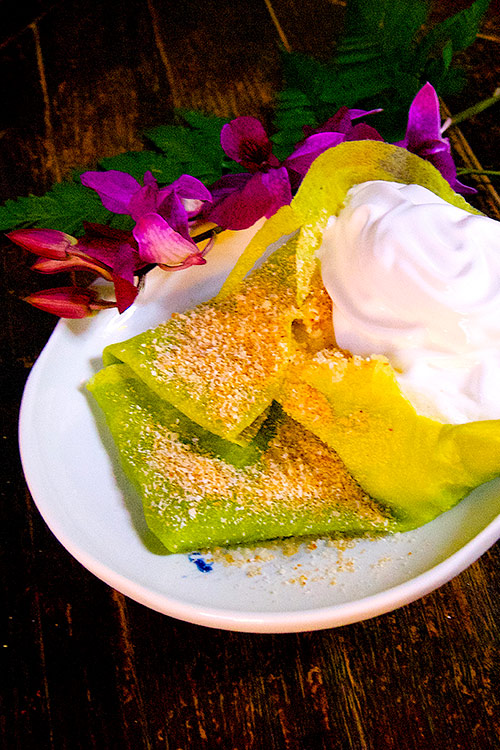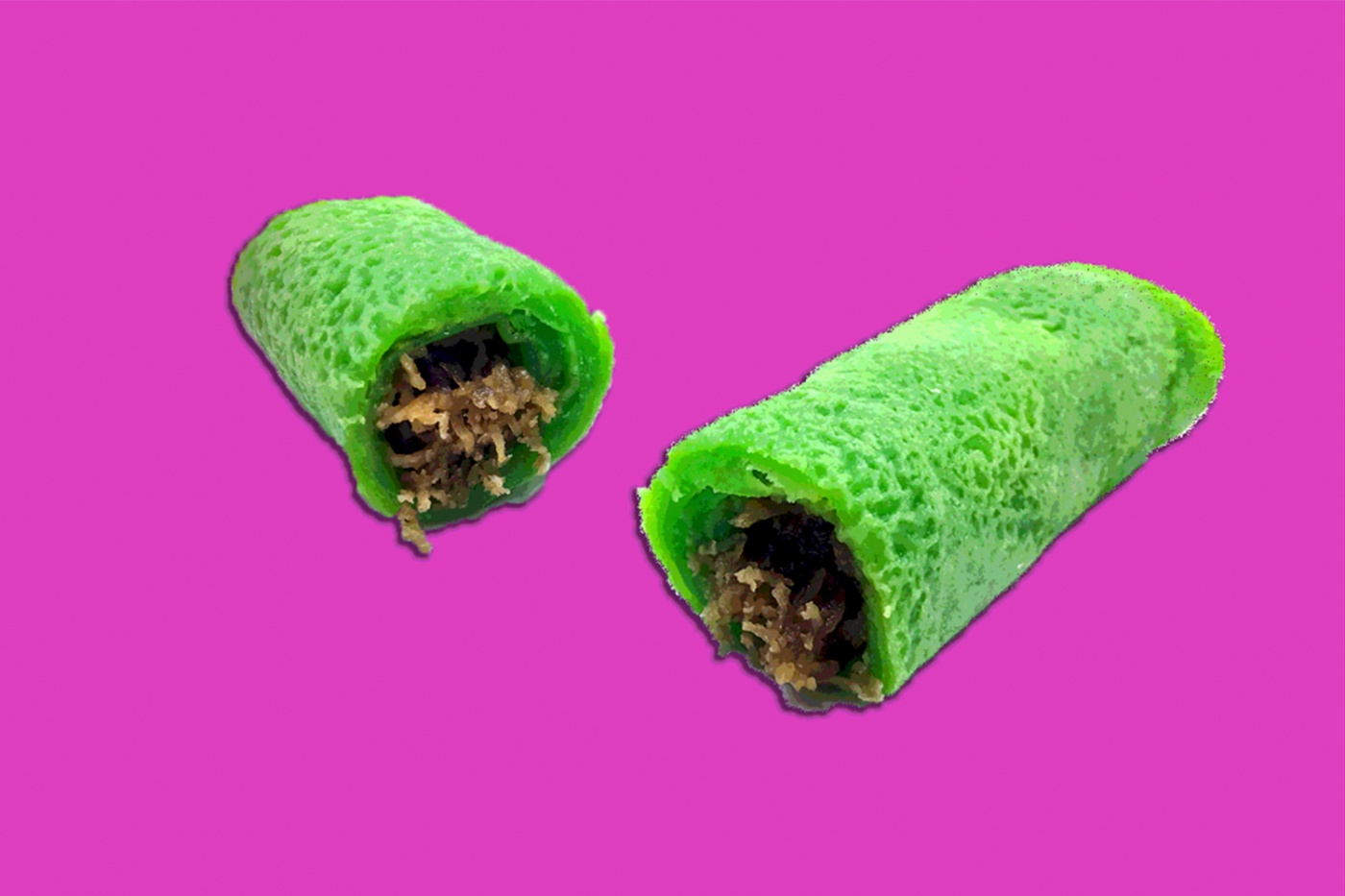Does Paying More Make (Pedestrian) Food Taste Better?
My love affair with kueh dadar has been a long-standing one—ever since the age of nine, when I serendipitously stumbled upon a nondescript shop in Geylang Serai and had my first taste of the green snack. The caramelised gula melaka hit me like an abrupt slap, jolting my flummoxed senses into astonishing clarity. Till now, those few seconds have not left my memory as one of the most vivid sensory experiences of my life.
For any foodie, sinking your teeth into well-made kueh dadar is like a watershed moment. It is a delicacy of transcendent deliciousness, with the ability to transport you to gastronomic heaven. Every mouthful is sweet, squishy, and inordinately satisfying. The luscious coconut filling is placed on a flat green pancake (made from a batter of flour, eggs and coconut milk), and folded on each side like a tortilla. The biggest draw apart from taste is the affordability, which can be yours for only $1.80 at traditional bakeries and cake shops.
This humble bundle of joy has inspired chefs to interpret the snack in unique ways. At SLING, a Singapore restaurant offering local cuisine with a Peranakan flair, chef Ethan Leslie Leong created a deconstructed version of this nostalgic childhood favourite. In his elevated version of the kueh dadar, the essence of the original is preserved but presented through new textures (like foams) and unusual flavour combinations. While creativity changes the form, the basic nature of the dish remains the same. Local ingredients get the respect they deserve and spotlighted in all their natural glory. Priced at $18, Leong’s take on the Nyonya dessert is 10 times more than the price of the traditional kueh dadar found in hawker centres. As exorbitant as it may be, Leong believes that every single cent spent on this dish is justifiable as it is not just any other kueh dadar. “Ours has a different texture and presentation as compared to the traditional kueh. At SLING, we want to create elevated versions of local cuisine while still staying true to their authentic taste,” he said.

Now the question is, is it worth the steeper-than-usual price tag? The presentation is flawless—a crispy French-style pandan crepe is delicately placed on a ceramic plate with a dainty drizzle of gula melaka to bring the different elements together in an exciting explosion of flavour. “We engineered the flavour profile of the Kueh Dadar very carefully,” Leong added. Take one bite and the difference is clear. Instead of the chewy skin of the traditional kueh dadar, the coating is light and crispy similar to a waffle cone. A sprinkle of desiccated coconut retains its traditional touch, while the addition of coconut espuma lends it an intriguing, modern twist. It is a bold and unorthodox combination, balanced with the comfort of familiarity. The overall appeal is more cerebral and gastronomic, instead of carnal and libertine.
When asked if $18 is a reasonable price to pay for the dessert, Leong said, “With all the quality ingredients and modern techniques that go into it, we are in fact, pricing ourselves below the actual market value. We spent a long time doing research and development to ensure that we were presenting familiar flavours in a unique manner.”
Increasingly, casual, low-key comfort foods like kueh are getting the gourmet treatment—and gastronomists are being thrown for a loop. Bohemian chef Bjorn Shen’s pizza omakase caused quite a stir in the dining scene with prices starting at an eye-watering $650 for a group of four. But people are still flocking to Small’s to get a slice of the action. Kueh dadar isn’t new, but the complex techniques used and reinterpretation of all the components, are. From the air-conditioned comfort of the restaurant to the attentive table service, and convivial ambience, the value of the kueh lies in the whole experience of its consumption.
The exasperating subjectivity of the perceived value of food and how it defies quantification makes it difficult to say that one version is superior to the other. Both renditions—the one found in confectioneries and the one at SLING—are their own ‘works of art’ stemming from a place of effortful love. Most importantly, they are both utterly delicious. One may argue that psychologically, people will rate the quality of food higher, if they pay more for it. But let’s hope they are able to tell the difference between pâté and terrine.


